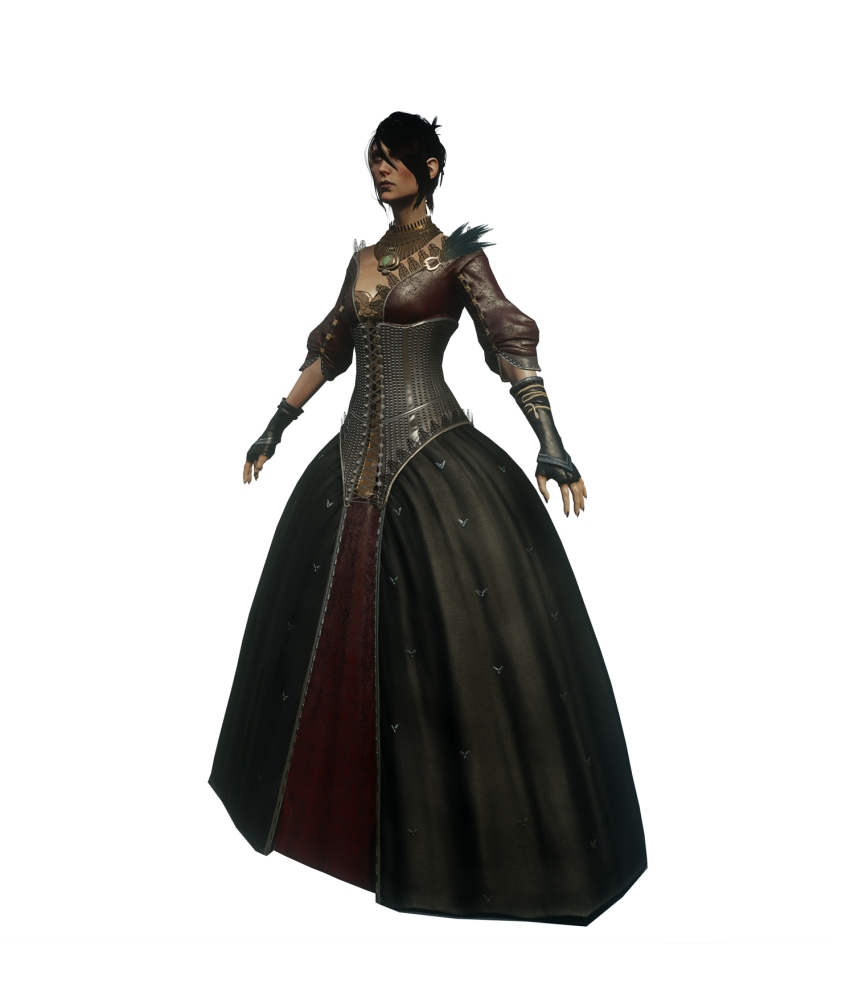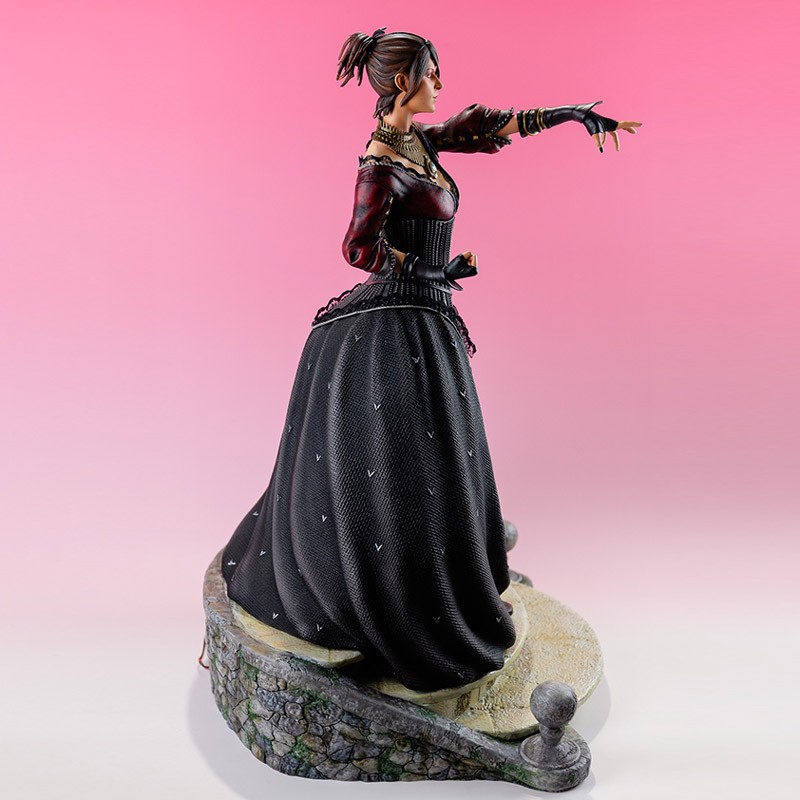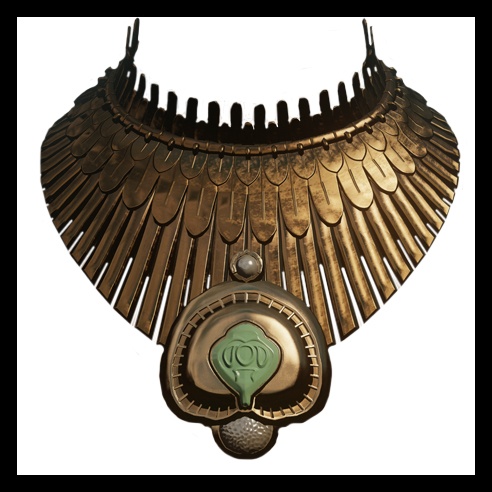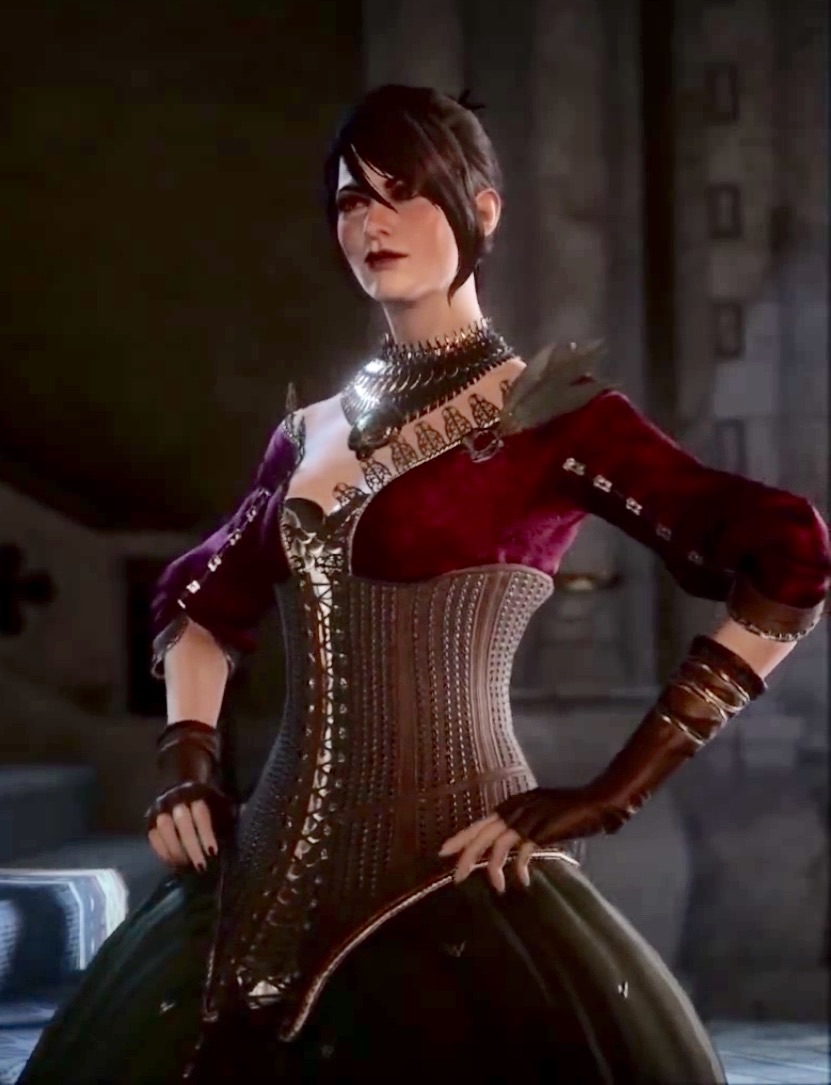So part of the reason I started writing these posts was to pin down some of the brainstorming I was doing on the various parts so that when I come back to the pieces after a week or so I’m not starting again every time I look at it. This means the stuff that’s going to show up more at this stage are the pieces that need a bit more thought. The parts where I already know how I’m going to approach the issue (skirt, bodice, gloves) are going to take less preparation than the parts where I need to learn a new skill or deal with the laws of physics in a way the game designers didn’t are going to need a bit more thought before I even get to the mock up stage.
With that in mind here’s me putting down some thoughts about how I’m going to make the skirt have the required shape. The main issue with this is that the skirt actually has a very unusual shape to it, being nearly flat in the front, but having a lot of fullness at the sides and back.

This shows the large fullness at the sides

The side view shows how the skirt falls almost straight down at the front, but has a lot of volume at the back.
Between the first picture and the obvious influence of the French court at Versailles over Orlesian design, I first thought that panniers were the way to go. They’d give me the shape I needed at the sides and would even be moderately realistic (for the costume of a witch in a fantasy land, sure, but realistic all the same). However, the more I looked at pictures, the more I realised that I needed some way of getting the back fullness in there.
Which is sort of where I hit a snag, because that sort of dress shape doesn’t really exist in Earth history. Side fullness is easy, per the panniers of late 17th/early 18th century fashions. Fullness all round is also pretty easy, via the early Victorian/American Civil War full hoop crinoline option. Fullness just at the back but not at the front or sides, totally doable with later Victorian bustle design. Fullness at the sides and back but not the front is just not really a thing. The closest I could find is the mid-Victorian elliptical crinoline, which fashion-wise was the transition from the full round hoop to the bustle. The problem I have with that is that patterns are hard to find and a significant proportion seem to loose the fullness at the sides to get a more truly elliptical shape, whereas I want a large “D” shape. I also want to aim for a more dome style top rather than the straight conical look that many of the hoop styles have.
So my current options are:
- Try to make an elliptical crinoline with the shape I want.
- Make an elliptical crinoline with the standard pattern and add padding to the sides to return side fullness.
- Make panniers and use a bum roll and other padding to add back fullness.
- Say screw it and just go for a round skirt with underlayers of net for fullness.
I’ve found an old pattern that seems like it should get me close to the shape I want, but it seems pretty work intensive for something that I’m not even sure if it will work. And of course I can’t make the pattern for the skirts (and thus finalize how much fabric I’ll need) until I’ve done it. But then this is my crazy pants costume, maybe I should just go ahead and do the crazy pants crinoline.






